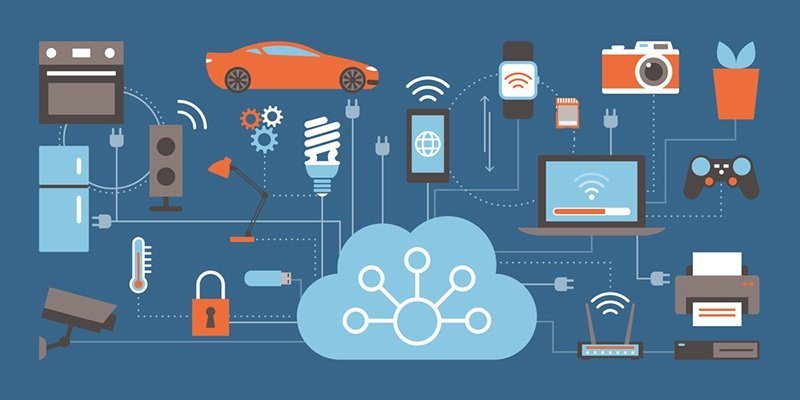The human race has progressed exponentially since the Technological Revolution occurred in the 19th century. We humans went from cooking raw meat over flames to stepping foot on an extraterrestrial body! The dawn of the scientific-technical revolution impacted the world so much that it’s impossible to articulate its impact. Anyways, thanks to the ever-evolving technology, we have significantly improved our morale and living standards in today’s society.
To describe its significance in short, let us take an example. A car today has the ability to act by itself when the driver applies sudden brakes to reduce skidding and accidents, and it can also park itself using Smart Parking System. And all of that and more is a part of one such concept of technology that is not only revolutionary but has also helped humankind in countless ways: Internet of Things (IoT).
What is Internet of Things (or IoT)?
Well, there are many ways to define Internet of Things. One is that IoT comprises ‘things’ that have unique identities and are intertwined with the Internet and all other ‘things’ as well. In this case, ‘things’ are nothing but the devices such as networked computers or internet-enabled mobile phones. From the last example that we spoke of, we mentioned that even cars had IoT devices. To clarify, the devices, in this case, are the embedded computers or microcontrollers that are CPUs/computers embedded on a single chip. The only difference between them and general-purpose computers is that they serve a specific purpose instead of multitasking.
The scope and uses of IoT are not only limited to connecting things to the internet. It also lets these things communicate and exchange data while executing meaningful applications towards a typical user. Let us look at some of its applications to have a better insight.
Uses of IoT
Given below is a list of applications of IoT that will help you understand its significance in the real world:
- Home appliances: Smart Lighting, Smoke detectors, etc.
- Cities: Smart Parking, Smart roads, etc.
- Environment: Weather monitoring, air pollution monitoring, etc.
- Energy: Smart Grids, Renewable Energy Systems, etc.
- Retail: Inventory Management, Smart Payments, etc.
- Logistics: Shipment Monitoring, etc.
- Agriculture: Smart Irrigation, Greenhouse Control, etc.
- Industry: Machine Diagnosis, Indoor Air Quality Monitoring, etc.
- Health & Lifestyle: Health & Fitness Monitoring, Wearable Electronics, etc.
- Finance: Banking, Investment, Cryptocurrency etc.
Characteristics of IoT
The defining qualities of IoT devices include:
- Dynamic Global Network & Self-Adapting: Adapts to the changes in the real world.
- Self-Configuring: Fetches the latest updates without manual intervention, etc.
- Interoperable Communication Protocols: Communicates through various protocols.
- Unique Identity
- Integrated into Information Network: This allows the devices to communicate and exchange data with other devices to perform analyses.
Factors that have enabled IoT
The factors given below have significantly helped IoT to come to reality in the modern world:
- Less power-consuming microprocessors: Energy-efficient and high-speed are believed to have been the precursors in the development of IoT devices.
- Inexpensive sensors: Commercial products manufacturing industries found it easier to embed IoT technology because of their low prices.
- Cloud computing: Daily, a humongous amount of data is created by the IoT devices, which must be stored. Consumers, as well as businesses, can access the servers in which this data is stored.
- Artificial Intelligence (AI): Incorporating AI into IoT devices has been a very successful blend of two different technologies. Click here to learn about the different types of AI platforms.
- Big Data: There are many sensors in use today, and IoT predominantly depends on them. These sensors continuously exchange and create data, which need processing to make meaning.
Conclusion
In the end, almost everything that we use today has IoT devices embedded in them – from a bulldozer to a smartwatch! It has a tremendous amount of scope and quite literally is the future of technology!


15 thoughts on “A Beginner’s Guide to Internet of Things”